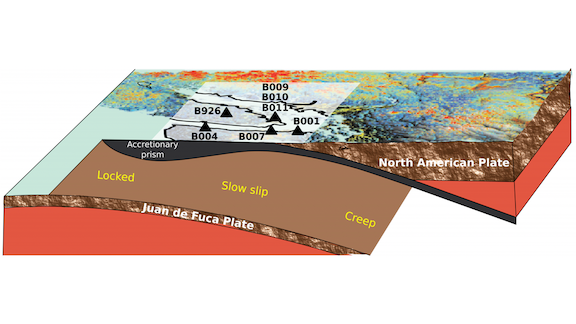Geologists call them slow slips: deep, low-frequency earthquakes that can last a month but have little effect on the surface. A model trained to predict such events could help with forecasting potentially catastrophic quakes.
What’s new: French and American seismologists trained a model to recognize acoustic patterns associated with slow slips where one tectonic plate slides beneath another. Some seismologists believe that slow slips shift stress from deep in a geological fault up to the Earth’s brittle crust, presaging potentially catastrophic quakes.
How it works: The authors began by simulating slow slips in the lab using two sheets of synthetic material, like acrylic plastic, separated by a thin layer of a granular, sandy medium. The video above is a microscopic view of the sheets in action.
- The researchers recorded the acoustic signals emitted by the sheets and granular layer as they compressed. Then they divided the recording into short segments and fed them into a random forest model.
- The model found that the signal’s gradual variance from mean — rather than big, sudden jumps just before a slip — was the best predictor that the sheets were about to experience a laboratory version of a slow slip.
- Having ingested seismic data from the tectonic plate that runs from Canada to California between 2007 and 2013, the model predicted four of the five slow slips that occurred between 2013 and 2018.
We’re thinking: Seismologists already provide short-term risk assessments for a given location and time span. This research could lead to long-term forecasts, months or years out, allowing planners to expedite earthquake safety upgrades that otherwise may be delayed due to their cost.

